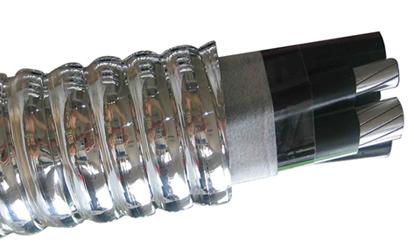1. The conductivity of rare earth aluminum alloy cables: the conductivity of aluminum alloy is 61.5% of the commonly used reference material copper IACS, and the current carrying capacity is 79% of copper, which is better than the pure aluminum standard.
2. Creep resistance of rare earth aluminum alloy cable: The alloy material and annealing treatment process of aluminum alloy conductor reduce the "creep" tendency of the conductor under heat and pressure. Compared with pure aluminum, the creep resistance is increased by 300%. To solve the relaxation problem caused by cold flow or creep.
3. Tensile strength and elongation of rare earth aluminum alloy cables: Compared with pure aluminum conductors, aluminum alloy conductors have greatly improved tensile strength and elongation due to the addition of special ingredients and special processing techniques. Up to 30%, it is safer and more reliable to use.
4. Thermal expansion coefficient of rare earth aluminum alloy cable: The thermal expansion coefficient is used to calculate the size change of the material when the temperature changes. The thermal expansion coefficient of aluminum alloy is equivalent to that of copper. Aluminum connectors have been reliably used for copper and aluminum conductors for many years, and most of the electrical connectors used today are made of aluminum, which is especially suitable for aluminum alloys. Therefore, the expansion and contraction of the aluminum alloy conductor and the connector are exactly the same.
5. Rare earth aluminum alloy cable has strong self-weight bearing capacity. Aluminum alloy improves the tensile strength of pure aluminum. The aluminum alloy cable can support the weight of 4000 meters, and the copper cable can only support 2750 meters. This advantage is particularly prominent when wiring large-span buildings (such as stadiums).
6. Anti-corrosion performance of rare earth aluminum alloy cable The inherent anti-corrosion performance of aluminum comes from the formation of a thin and strong oxide layer when the aluminum surface is in contact with air. This oxide layer is particularly resistant to various forms of corrosion. The rare earth elements added to the alloy can further improve the corrosion resistance of the aluminum alloy, especially the electrochemical corrosion. Aluminum's ability to withstand harsh environments makes it widely used as conductors for cables in trays, as well as many industrial components and containers. Corrosion is usually related to the connection of different metals in a humid environment. Corresponding protective measures can be used to prevent corrosion, such as the use of lubricants, antioxidants and protective coatings. Alkaline soils and certain types of acidic soils are highly corrosive to aluminum. Therefore, directly buried aluminum conductors should use insulating layers or molded sheaths to prevent corrosion. In sulfur-containing environments, such as railway tunnels and other similar places, the corrosion resistance of aluminum alloy is much better than that of copper.
7. Flexibility Aluminum alloy has good bending performance, and its unique alloy formula and processing technology greatly improve flexibility. Aluminum alloy is 30% more flexible than copper and has a 40% lower resilience than copper. Generally, the bending radius of copper cable is 10 to 20 times the outer diameter, while aluminum alloy cable
8. Armoring characteristics Most of the armored cables commonly used in China are armored with steel tape, with low security level. When subjected to external destructive forces, their resistance is poor, which is easy to cause breakdown, and the weight is heavy, and the installation cost is quite high. The corrosion resistance is poor and the service life is not long. The metal interlocking armored cable we developed according to American standards uses aluminum alloy tape interlocking armor. The interlocking structure between the layers ensures that the cable can withstand the strong destructive force from the outside, even if the cable is subjected to greater pressure The cable is not easy to be punctured under the impact force, which improves the safety performance. At the same time, the armored structure isolates the cable from the outside world. Even in the event of a fire, the armored layer improves the flame-retardant and fire-resistant level of the cable and reduces the risk of fire. Compared with the steel tape armored structure, the aluminum alloy tape armored structure is lighter in weight and convenient to lay. It can be installed without bridges and can reduce installation costs by 20% to 40%. Different outer sheath layers can be selected according to different places of use, which makes the use of armored cables more extensive.
9. Compression characteristics are only considered in terms of volume conductivity, aluminum alloy is inferior to copper, but the conductor we developed has not only improved the material properties, but also made big breakthroughs in the process. We use ultra-conventional compression technology , So that the compaction coefficient can reach 0.93, and the compaction coefficient of the special-shaped line can reach 0.95, which is the first in China. The large-scale compaction can make up for the lack of volume conductivity of aluminum alloy, so that the stranded conductor core is like a solid conductor, which significantly reduces the outer diameter of the core and improves the conductivity. Under the same current carrying capacity, the conductor is outside The diameter is only 10% larger than copper cable.





